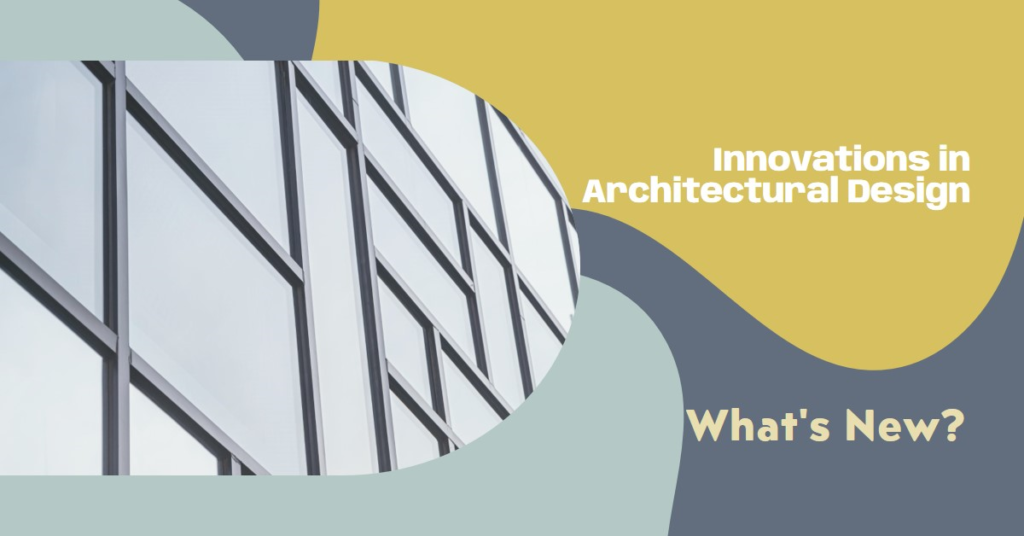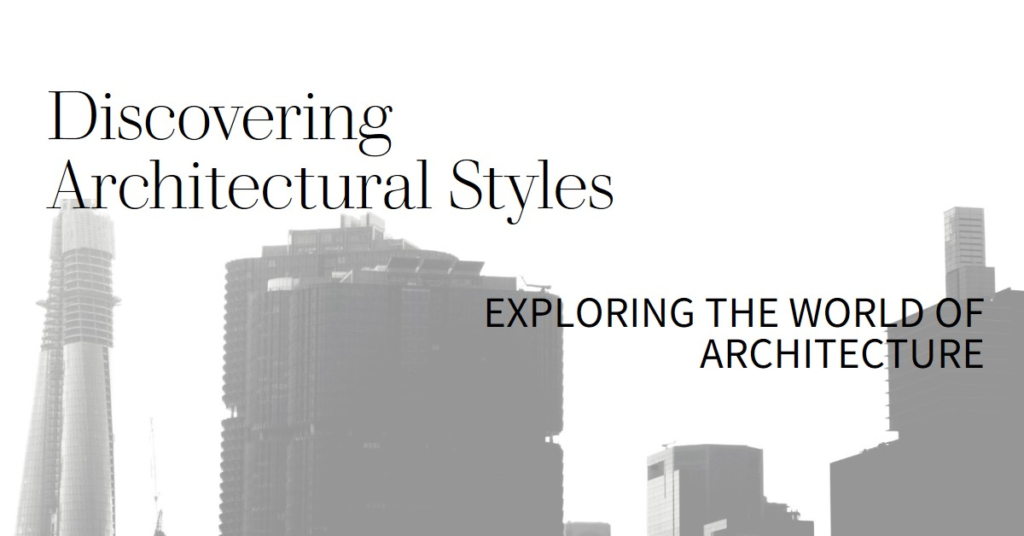
Table of Contents
Introduction : Architectural Design
In the dynamic realm of architectural design, innovation is the cornerstone of progress. With the rapid advancement of technology and evolving societal needs, architects and designers are continually pushing the boundaries of creativity and functionality. From sustainable materials to groundbreaking construction techniques, the landscape of architecture is witnessing a remarkable transformation. In this blog post, we delve into the latest innovations shaping the architectural industry, exploring their implications for the future of design and construction.
Revolutionizing Sustainability: Eco-Friendly Materials and Practices
Sustainability has emerged as a central focus in architectural design, driven by the urgency of combating climate change and promoting environmental stewardship. Innovations in this realm are revolutionizing the way buildings are constructed, with an emphasis on reducing carbon footprint and promoting energy efficiency. One notable development is the rise of eco-friendly materials such as recycled steel, engineered wood, and low-impact concrete alternatives. These materials not only minimize environmental impact but also offer durability and aesthetic appeal.
In addition to materials, sustainable practices such as passive design strategies and green building certifications are gaining prominence. Passive design harnesses natural elements like sunlight and ventilation to regulate temperature and reduce reliance on mechanical systems, resulting in energy savings and enhanced occupant comfort. Moreover, green building certifications such as LEED (Leadership in Energy and Environmental Design) provide guidelines for designing and constructing environmentally responsible structures, driving industry-wide adoption of sustainable practices.
Embracing Technological Advancements: Digital Fabrication and Parametric Design
The advent of technology has revolutionized the architectural design process, empowering architects with tools and techniques that were once unimaginable. Digital fabrication, also known as 3D printing, has emerged as a game-changer in construction, enabling architects to create complex geometries with unparalleled precision and efficiency. This technology allows for the customization of building components, reducing material waste and construction time while enhancing design flexibility.
Parametric design is another groundbreaking innovation that is reshaping architectural practice. By leveraging computational algorithms, architects can generate and manipulate design parameters to explore countless iterations and optimize performance criteria such as structural integrity, daylighting, and energy efficiency. This iterative approach enables designers to create highly optimized and responsive architectural solutions that are tailored to specific site conditions and user needs.
Fostering Human-Centric Design: Biophilic Architecture and Wellness Spaces
In an era marked by urbanization and technological immersion, the importance of human-centric design cannot be overstated. Architects are increasingly prioritizing the well-being and comfort of building occupants by integrating biophilic principles into their designs. Biophilic architecture seeks to reconnect individuals with nature by incorporating elements such as natural light, greenery, and views of the outdoors into the built environment. Research has shown that exposure to nature can enhance productivity, reduce stress, and improve overall health and well-being, making biophilic design a compelling approach for architects seeking to create healthier and more sustainable buildings.
Furthermore, the concept of wellness spaces is gaining traction in architectural practice, as designers recognize the impact of the built environment on mental and physical health. Wellness spaces are designed to promote relaxation, rejuvenation, and social interaction, catering to the holistic needs of building users. These spaces may include amenities such as meditation rooms, fitness centers, and communal gardens, fostering a sense of community and fostering a culture of well-being within the built environment.
Empowering Inclusivity: Universal Design and Accessible Architecture
Inclusivity is a core principle of architectural design, advocating for environments that are accessible and accommodating to individuals of all ages, abilities, and backgrounds. Universal design seeks to create spaces that are usable by everyone, regardless of physical or cognitive limitations, thereby promoting equality and social integration. Architects are incorporating universal design principles into their projects by implementing features such as ramped entrances, wide doorways, and tactile signage, ensuring that buildings are accessible to individuals with disabilities.
Moreover, advances in technology are expanding the possibilities for accessible architecture, with innovations such as smart assistive technologies and sensory design solutions. These technologies enhance the usability of spaces for individuals with disabilities, providing greater autonomy and independence in navigating the built environment. By prioritizing inclusivity in architectural design, architects can create environments that are welcoming, functional, and empowering for all individuals.


Championing Cultural Heritage: Adaptive Reuse and Preservation
Preserving cultural heritage is essential for maintaining a sense of identity and continuity in an ever-changing world. Architects are playing a crucial role in safeguarding historical landmarks and repurposing existing structures through adaptive reuse projects. Adaptive reuse involves transforming obsolete or underutilized buildings into new functional spaces while retaining their architectural character and historical significance. This approach not only conserves valuable resources but also celebrates the unique heritage and cultural identity of a place.
Furthermore, preservation efforts extend beyond individual buildings to encompass entire historic districts and urban landscapes. Architects collaborate with preservationists, historians, and community stakeholders to develop comprehensive conservation strategies that balance preservation with modernization. By breathing new life into historic structures and revitalizing urban environments, architects contribute to the cultural richness and vitality of cities while honoring the legacy of the past.
Navigating Urban Challenges: Vertical Urbanism and Mixed-Use Development
As cities grapple with rapid urbanization and population growth, architects are reimagining the urban landscape to address pressing challenges such as housing affordability, congestion, and environmental sustainability. Vertical urbanism has emerged as a viable solution for maximizing urban density and optimizing land use in densely populated areas. High-rise buildings and vertical mixed-use developments offer efficient use of space while creating vibrant urban ecosystems that integrate residential, commercial, and recreational functions.
Mixed-use development is another strategy gaining traction in urban planning and design, promoting diverse and walkable neighborhoods that foster social interaction and economic vitality. By combining residential, commercial, and cultural amenities within a single development, architects create dynamic urban environments that cater to the diverse needs of residents and visitors alike. Moreover, mixed-use developments reduce reliance on cars and encourage sustainable modes of transportation, contributing to a more livable and resilient urban fabric.
Embracing Modular Construction: Efficiency, Speed, and Flexibility
In the quest for efficiency and sustainability, architects are turning to modular construction as a viable alternative to traditional building methods. Modular construction involves prefabricating building components off-site in a controlled factory environment, then assembling them on-site to create a complete structure. This off-site fabrication process offers numerous advantages, including reduced construction time, minimized waste, and improved quality control.
Furthermore, modular construction enables greater design flexibility and scalability, allowing architects to adapt and customize building configurations to suit specific project requirements. Whether used for temporary structures, affordable housing, or commercial developments, modular construction offers a versatile and cost-effective solution for meeting the growing demand for sustainable and efficient buildings. As technology continues to advance and market demand grows, modular construction is poised to become an integral part of the architectural landscape, shaping the future of construction and urban development.
Conclusion: Shaping the Future of Architecture
Innovation lies at the heart of architectural progress, driving transformative change in the way we design, build, and inhabit the built environment. From sustainable materials to digital fabrication, architects are leveraging cutting-edge technologies and interdisciplinary approaches to address pressing societal challenges and create spaces that are both functional and inspiring. As we look to the future, the possibilities for architectural innovation are limitless, offering endless opportunities to shape a more sustainable, inclusive, and resilient built environment for generations to come.


